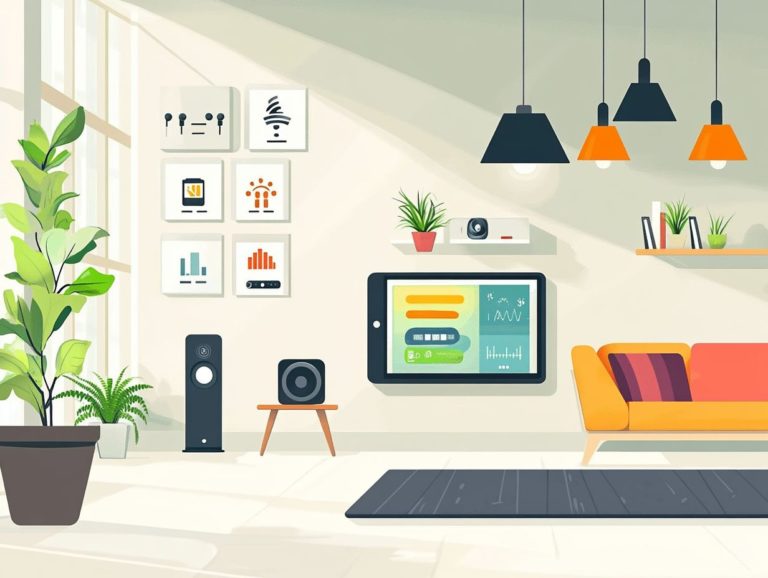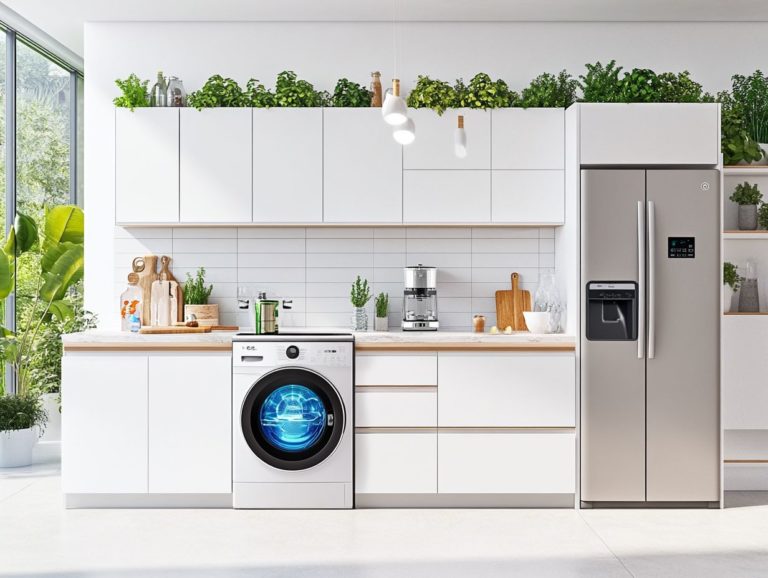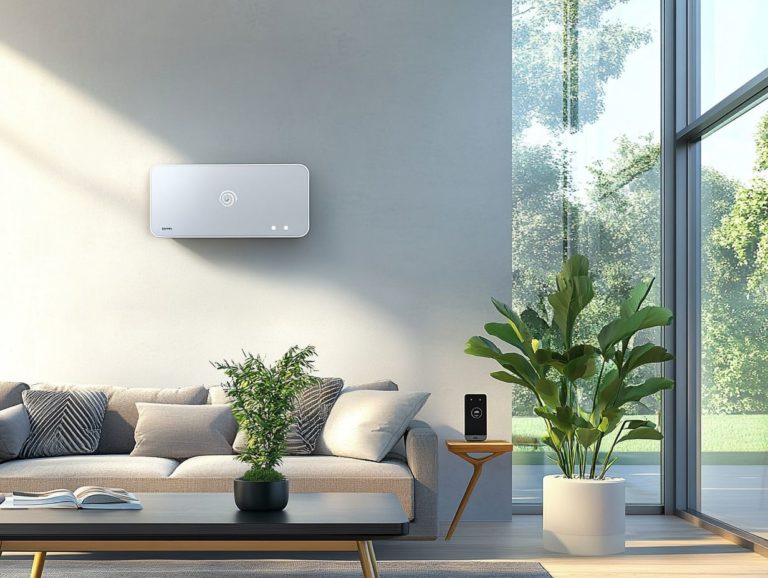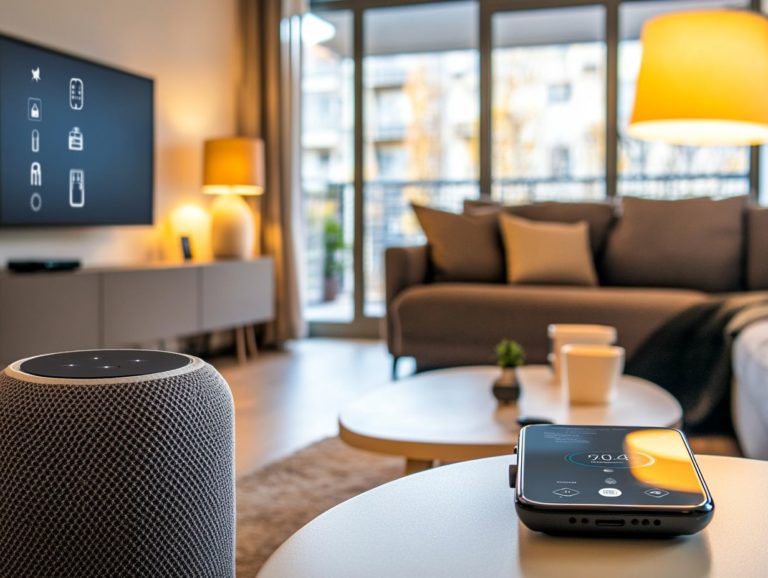Smart Home Technology: Trends for 2024
As smart home technology continues to evolve, it is transforming the way you live, interact, and manage your environments.
This article delves into the current landscape of the industry, highlighting key trends you should be aware of, such as voice control, Internet of Things (IoT) integration, and an increasing focus on energy efficiency.
In 2024, expect significant advancements that will shape your daily life.
These innovations bring challenges, especially concerning privacy and accessibility.
Dive in with us to explore the exciting journey of smart home technology from the past to the future!
Contents
- Key Takeaways:
- The Rise of Smart Home Technology
- Current Trends in Smart Home Technology
- Predictions for 2024
- Challenges and Concerns for Smart Home Technology
- Frequently Asked Questions
- What is the current state of smart home technology?
- What are the top trends in smart home technology for 2024?
- How will AI shape the future of smart homes?
- What are the benefits of voice-controlled smart home devices?
- What are the security concerns with smart home technology?
- How will smart home technology impact energy efficiency?
Key Takeaways:
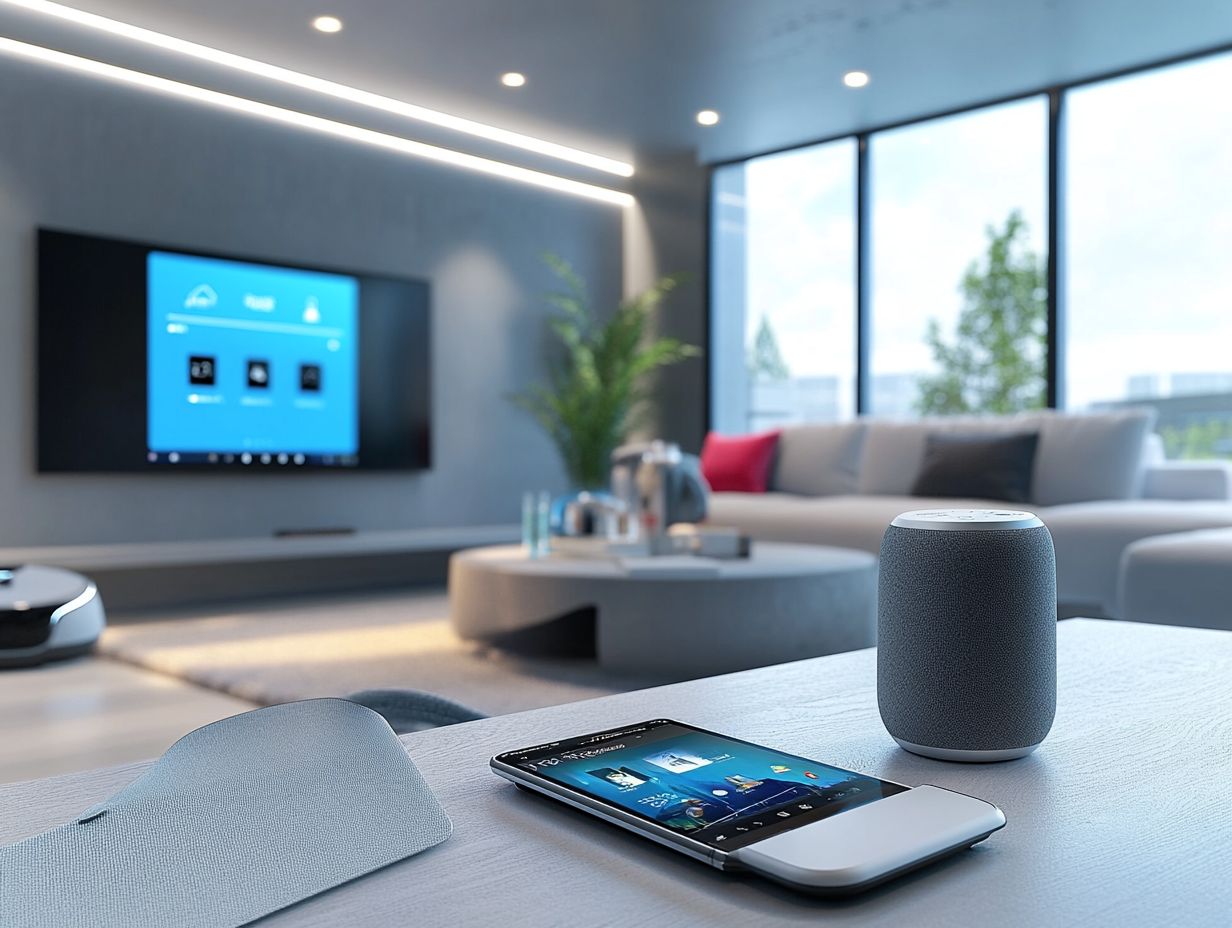
- Smart home technology is on the rise, with an expected increase in adoption and development over the next few years.
- Voice control and integration with Internet of Things devices are currently major trends, focusing on energy efficiency and sustainability.
- By 2024, we can expect even more advanced technology and a significant impact on daily life and society, but also potential challenges and concerns surrounding privacy, security, and affordability.
The Rise of Smart Home Technology
The rise of smart home technology has fundamentally changed how you interact with your living space, providing you with unparalleled convenience and energy savings. It enhances security and automation features.
As more homeowners like yourself embrace this technology, the demand for advanced home security systems, smart appliances, and complete home integration has surged. This growing trend reflects your desire for homes that offer comfort and seamlessly weave in innovative features, like the future of home energy management with smart tech, to elevate your daily life.
With industry leaders like Amazon and Google at the forefront, the evolution of smart home trends shapes modern living, making it easier to stay connected to your home than ever. For those interested in the latest advancements, check out 5 innovative smart home technologies to watch.
Overview of the Industry
The smart home technology industry offers an impressive array of innovations designed to elevate your living experience, enhancing convenience, comfort, and security in your modern home. From smart appliances to sophisticated home security systems, the options are plentiful.
Imagine having a smart fridge that keeps track of your food inventory and suggests recipes based on what you have on hand. Picture smart thermostats that learn your daily routine to optimize heating and cooling, allowing you to enjoy energy efficiency effortlessly.
Home automation solutions take this to the next level by seamlessly integrating your lighting and entertainment systems, enabling you to control your environment through your smartphone or voice assistant.
When it comes to security, the industry has you covered. With real-time surveillance cameras and smart locks, you can monitor your property remotely, giving you peace of mind. This showcases how the smart home technology industry caters to diverse needs while continually pushing the boundaries of convenience in your daily life.
Current Trends in Smart Home Technology
Current trends in smart home technology indicate a remarkable shift toward voice control and seamless integration of devices within the Internet of Things (IoT). This shift not only makes using your devices easier but also helps save energy at home.
Voice Control and Virtual Assistants
Voice control has become an essential feature in smart home technology, allowing you to interact with your devices effortlessly through virtual assistants like Amazon’s Alexa and Google Assistant.
This innovative functionality streamlines your daily routines by enabling voice-activated commands for a variety of tasks, whether it s adjusting the thermostat or controlling lighting and entertainment systems.
You can set the perfect mood with just one command. Make your mornings easier by turning on the coffee maker and playing your favorite tunes as soon as you wake up.
Leading the charge in this revolution, industry giants like Amazon and Google have made significant strides. Amazon s Echo devices integrate seamlessly with countless smart home products, while Google Home coordinates devices from various manufacturers, ensuring compatibility across the board.
This level of convenience not only adds a touch of luxury to your life but also fosters a more connected and intuitive living experience.
Integration with Internet of Things
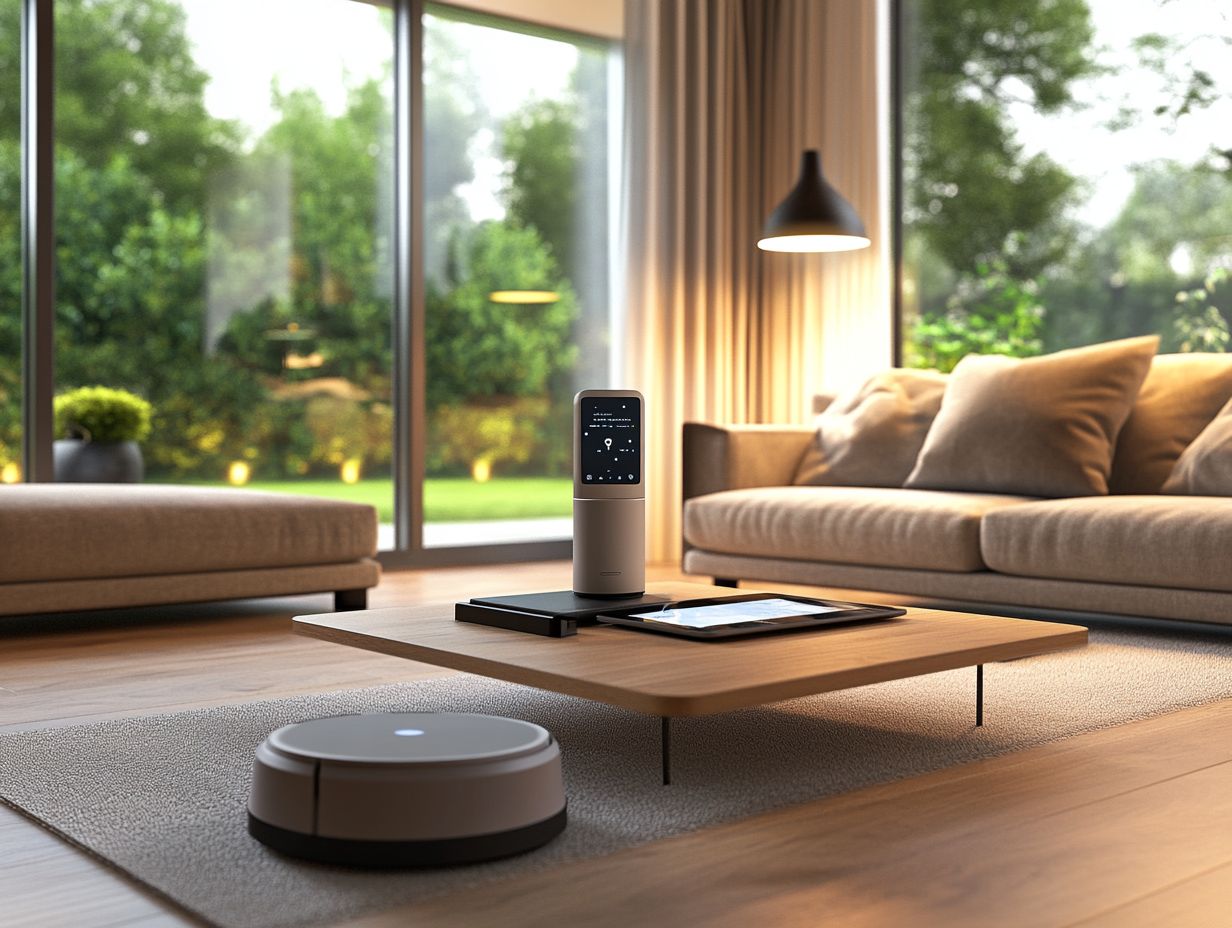
The integration of smart appliances within the Internet of Things (IoT) framework represents a transformative advancement in smart home technology. It allows you to achieve total home integration that simplifies your everyday tasks.
This network of connected devices lets you control and monitor your home environment effortlessly, whether you re adjusting the thermostat from afar or scheduling appliances for optimal energy efficiency.
As these systems become increasingly intuitive, they start to anticipate your preferences and habits, contributing to a seamless lifestyle that prioritizes your convenience.
The ongoing trend toward holistic home automation isn t just about individual devices chatting with one another; it s about creating an integrated hub that facilitates a cohesive user experience.
These advancements not only enhance your daily routines but also optimize resource usage, ensuring that your home is both functional and energy-efficient.
This reflects a growing commitment to sustainability in modern living, allowing you to embrace a smarter, more eco-friendly lifestyle.
Energy Efficiency and Sustainability
Energy efficiency and sustainability are leading the charge in today’s smart home trends, with innovations like smart thermostats and smart lighting systems taking center stage in the quest to reduce energy consumption.
These advancements do more than just add a touch of convenience to your daily life; they play a crucial role in environmental conservation.
For example, smart thermostats are designed to learn your schedule, optimizing heating and cooling preferences to help you achieve significant energy savings over time.
Meanwhile, smart lighting systems equipped with motion sensors and dimming features ensure that lights are only activated when needed, effectively minimizing unnecessary electricity use.
People are now eager to embrace eco-friendly features! You might find that integrating such technology into your home not only simplifies your routines but also champions sustainable living practices that benefit both you and the planet for years to come.
Predictions for 2024
As you look ahead to 2024, predictions for smart home technology promise exciting advancements. You’ll find that home automation and enhanced entertainment experiences are set to transform the user experience in ways you’ve only dreamed of.
Don t miss out on the convenience of smart technology! Explore and invest in smart home innovations today!
Expected Technological Advancements
You can expect that upcoming advancements in smart home technology will prioritize enhancing your interaction with devices and expanding the capabilities of smart appliances. These innovations will also refine home automation processes.
These improvements will likely incorporate programs that learn from your habits, allowing your devices to suggest optimal settings or routines tailored just for you. Additionally, exploring smart home technology trends for sustainable living will enhance your setup. Artificial intelligence will be key in facilitating seamless communication between devices, enabling them to work harmoniously together and create a more cohesive living experience.
As you and other consumers grow more accustomed to these innovations, there will be an increasing demand for integrated ecosystems that not only streamline your daily tasks but also boost energy efficiency. Ultimately, the convergence of these technologies will encourage broader consumer adoption as households like yours seek to harness the full potential of energy efficiency trends that connect to each other.
Impact on Daily Life and Society
Smart home technology is transforming your daily life and society in incredible ways! It enhances convenience through automated systems and integrates advanced security features, significantly elevating your overall safety.
This change reaches far beyond your own household; it subtly influences community interactions and lifestyle choices as well. With smart appliances handling mundane chores, you ll find yourself free to immerse in personal interests and social engagements instead of being bogged down by everyday tasks.
Meanwhile, the enhanced security features instill a sense of collective safety, encouraging you and your neighbors to build stronger connections and communicate more frequently about shared concerns. As you embrace these innovations, you re not just reshaping your daily routine; you re redefining the very essence of modern living, creating an environment where technology and community thrive in harmony.
Challenges and Concerns for Smart Home Technology
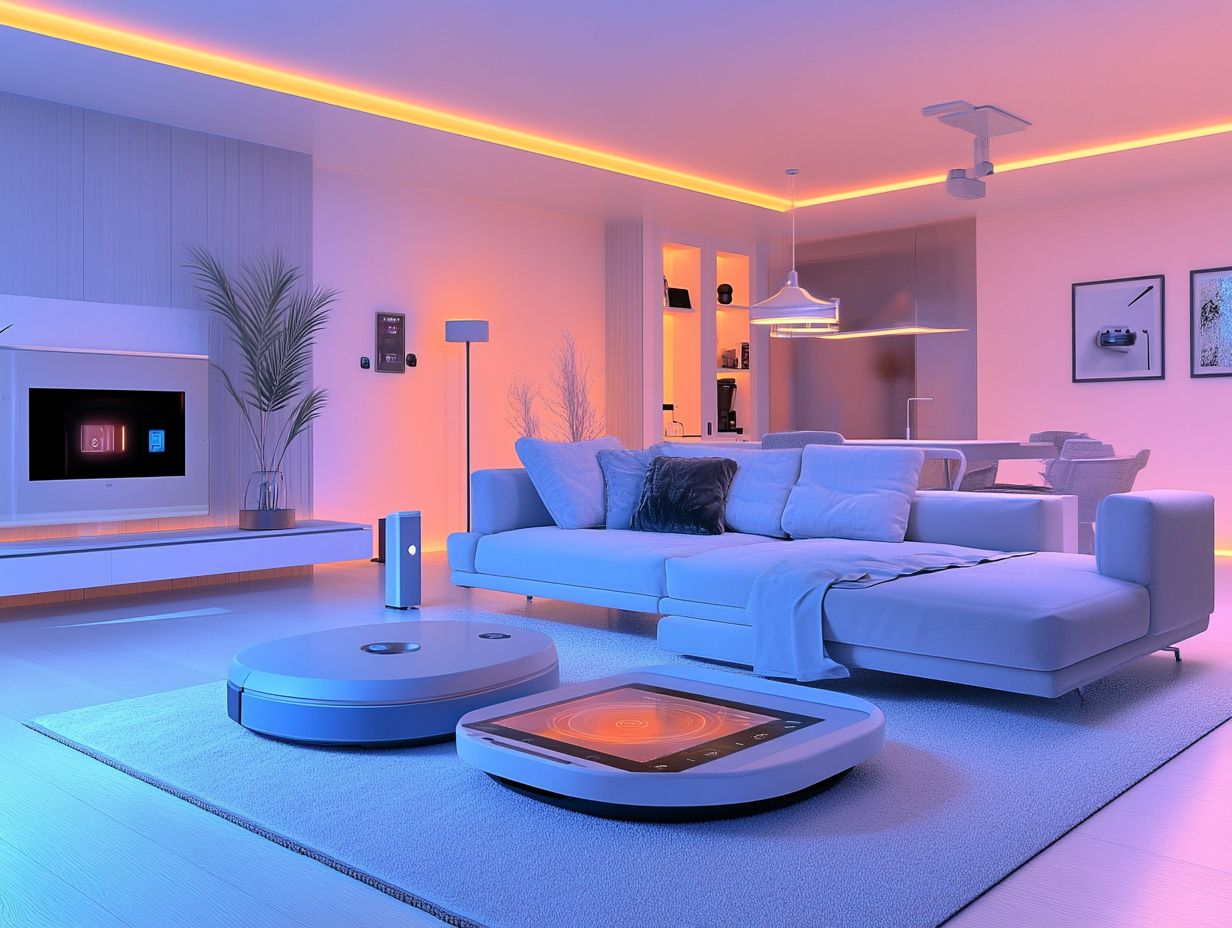
While smart home technology presents a wealth of advantages, it’s important to acknowledge that several challenges and concerns remain.
You may find yourself contemplating issues related to privacy, security risks, affordability, accessibility, and home automation in this rapidly evolving digital landscape.
Privacy and Security Risks
Privacy and security risks loom large for you as a user of smart home technology. The growing connectivity of devices prompts important questions about how well your data is protected and the vulnerabilities that may exist.
With a myriad of devices interconnected think smart locks, cameras, and thermostats, as well as smart fridges and smart lighting the potential for data breaches escalates, putting your personal information at risk of unauthorized access. This situation not only jeopardizes your privacy but could also open the door to physical security breaches within your home.
To counter these threats, it s essential to implement stringent security measures, such as:
- Setting strong, unique passwords
- Regularly updating device firmware
- Utilizing encryption
You can also enhance your security by integrating voice control features responsibly.
By taking these proactive steps, you can significantly diminish the risk of cyberattacks and fortify your home environment against unwanted intrusions.
Affordability and Accessibility
Affordability and accessibility are pivotal factors that shape your experience with smart home technology. Cost barriers often hinder your ability to invest in advanced home automation systems, leaving you with limited options. Leading designers like Danielle DeBoe Harper, Melissa Mohr, Elaine Smith, Joshua Danovitz, Dahlia Mahmood, and Shivani Vyas advocate for designs that are more accessible.
This reality creates a divide in who can enjoy the benefits of innovations meant to enhance comfort, security, and energy efficiency in homes. You might find yourself caught in a cycle where the initial investment in smart devices like smart coffee makers and smart TVs is too high, forcing you to settle for basic products that lack full functionality. Understanding how smart technology is shaping the future of homes can help you make informed decisions about your investments.
To address this issue, manufacturers need to reduce production costs through larger production and increased competition. This approach could help bring more affordable options to the market. For instance, introducing tiered pricing models or bundling services could make accessing smart home technology easier. Companies like Amazon and Google are already exploring these strategies.
Federal incentives can help bridge the gap by subsidizing costs for low-income households. This ensures that advancements in technology reach a wider audience. As a result, everyone can enjoy the convenience and benefits these systems offer, regardless of their financial situation. For example, integrating smart kitchen appliances and smart bathrooms can significantly enhance your quality of life.
Frequently Asked Questions
What is the current state of smart home technology?
The market for smart home technology is rapidly growing, with an estimated worth of over $150 billion by 2024. This growth is driven by increased demand for convenience, security, energy efficiency, and customization in homes. Companies like Moen and TOTO contribute to this trend with innovative designs.
What are the top trends in smart home technology for 2024?

Top trends for 2024 include the integration of Artificial Intelligence (AI) for improved automation and personalization, the rise of voice-controlled devices, the adoption of smart home security systems, and the use of smart appliances for energy efficiency. Additionally, home design trends suggest a move towards total home integration.
How will AI shape the future of smart homes?
AI will play a crucial role in smart home development, enabling devices to learn and adapt to our daily routines and preferences. This will lead to more personalized and efficient home automation, making our lives easier and more convenient. Automated homes will become the norm, significantly enhancing quality of life.
What are the benefits of voice-controlled smart home devices?
Voice-controlled devices, like Amazon Echo or Google Home, allow hands-free control of smart home devices. This adds convenience and improves accessibility for individuals with disabilities.
What are the security concerns with smart home technology?
Smart home devices come with potential security risks. You must ensure strong passwords and regular software updates to protect against hacking and privacy breaches.
How will smart home technology impact energy efficiency?
Smart home technology can supercharge your energy efficiency! It allows you to monitor and control devices remotely, using artificial intelligence to optimize energy usage.

